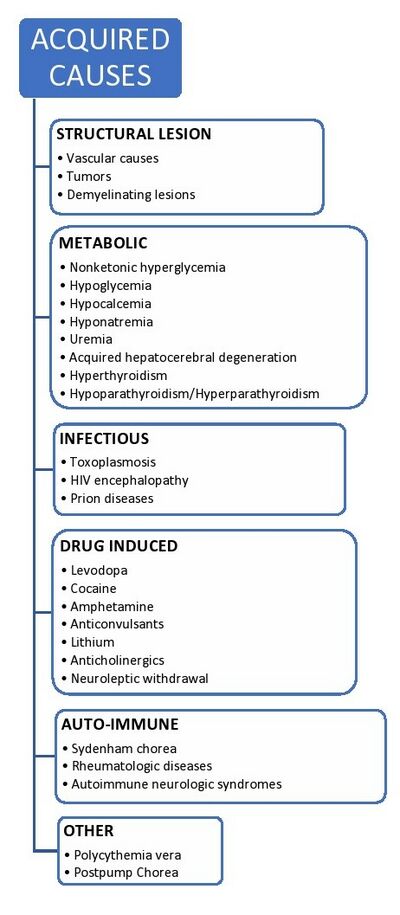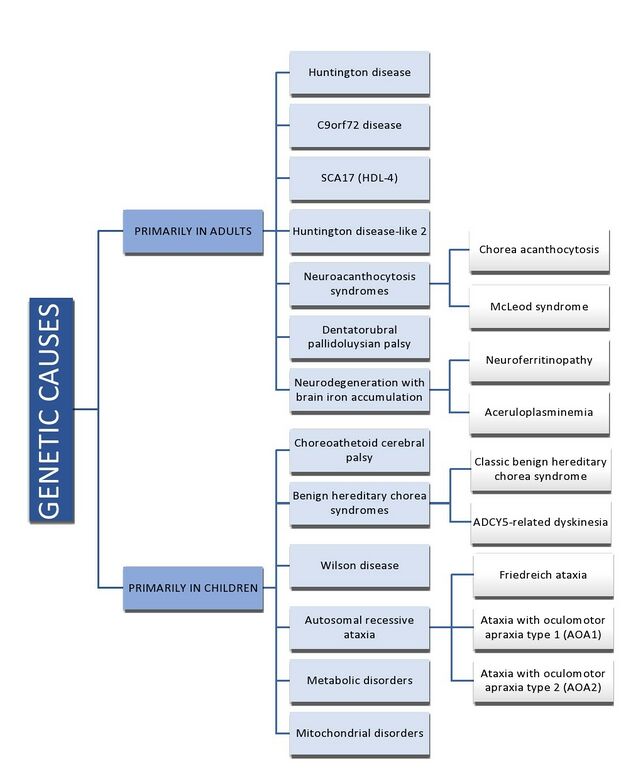Chorea: Difference between revisions
No edit summary |
(added image) |
||
| Line 12: | Line 12: | ||
* Genetic Causes | * Genetic Causes | ||
[[File:Acquired causes chorea.jpg|thumb|915x915px|Acquired Causes of Chorea|alt=|center]] | [[File:Acquired causes chorea.jpg|thumb|915x915px|Acquired Causes of Chorea|alt=|center]] | ||
[[File:Genetic causes of chorea.jpg|center|thumb|779x779px|Genetic Causes of Chorea]] | |||
== Phenomenological Features == | == Phenomenological Features == | ||
Revision as of 16:01, 2 August 2022
Introduction[edit | edit source]
The word Chorea has Greek origins meaning "to dance". It has a dance-like appearance due to the random and flowing quality of the movement. Chorea is a type of hyperkinetic movement disorder. The involuntary movements flow from one area of the body to another which cannot be predicted beforehand.
Causes[edit | edit source]
They are predominantly of 2 types
- Acquired Causes
- Genetic Causes
Phenomenological Features[edit | edit source]
- Randomness
- Flowing Quality
- Parakinesia
- Motor impersistence
- Ballism
- Athetosis
- Varying velocity of movements








